Aqua Blue vs Aqua White Mini Pebble (with Images & Videos)
Stonescapes Aqua Blue and Aqua White Mini Pebble are incredibly similar interior pool finishes. However, there are small differences you need to be aware of.
Both finishes create a medium blue color, similar to teal or turquoise. However, Aqua Blue will make a slightly darker appearance due to the added black and gold aggregates. Aqua Blue can sometimes come at a higher price than Aqua White as well but always consult your pool builder first.
Looking for darker options?
See my comparison of Tropics Blue vs Midnight Blue from Stonescapes.
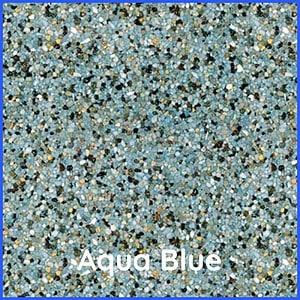
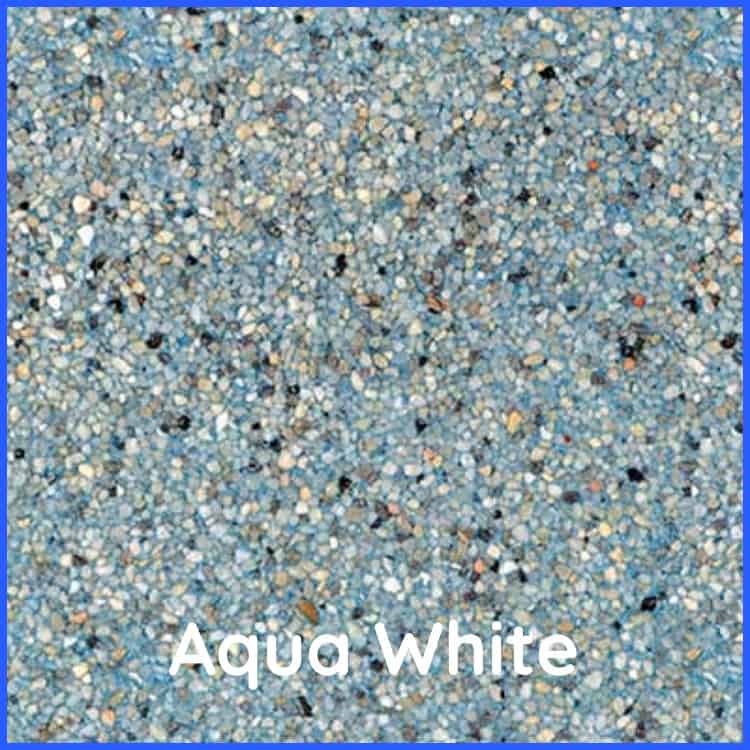
In this post, I will dive into these two Stonescapes finishes in more detail, providing both images and videos to help you decide what is best for you. Although the two colors are so similar, I will try my best to convey the differences.
Important Side Note:
Remember, the color of your Aqua Blue or Aqua White finish will be heavily influenced by the specific aggregate blend (e.g. Puerto Rico, Abalone Shell, etc.) you opt for, the climate, shade, the installer, and the pool’s surroundings. So, choose carefully and see as many samples as you can.
Water Color and Aesthetics
The difference between Aqua Blue and Aqua White is so slight – some would even argue there isn’t really a difference. I’ve even seen installers and pool owners recommending throwing a dart at two pictures and seeing where it lands!
I too think they’re both great, bright colors with little difference. However, I will say from experience that Aqua Blue is a bit darker, especially during overcast days. If your pool is shaded, I think you’ll see a bigger difference as well.
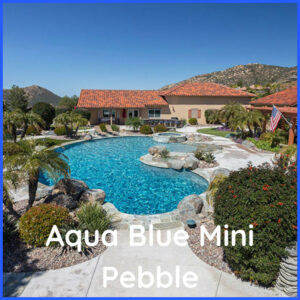
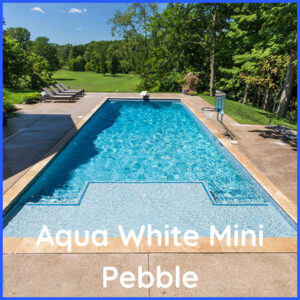
Aqua Blue does produce a more ocean-like vibe akin to what you’d find on a tropical island or the Caribbean. Aqua White produces something similar, just with more shine and sparkle.
Saying this, despite the fact both are considered to produce a medium blue color, I would also argue that Aqua White produces a slightly more neutral tone compared to Aqua Blue. Some customers have even gone as far as calling the finish a “little bland”.
I can see this being particularly true if you decide to mess with the aggregate blend or add too much abalone shell, as I imagine it would turn a little too white. But to be honest, I’ve never seen what I would consider a “bland” Aqua White pool!
As mentioned above, different factors such as pool positioning and climate have an impact on the final aesthetic. So, the next few sections will show these finishes in different situations and with different blends.
Color in Sunlight
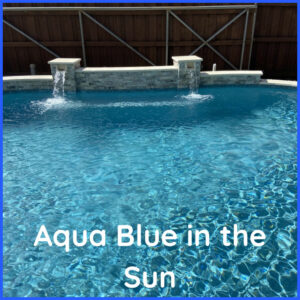
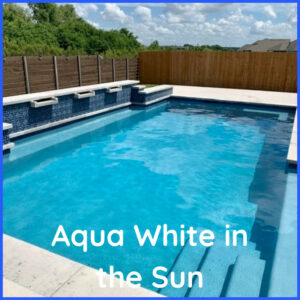
Color in Shade
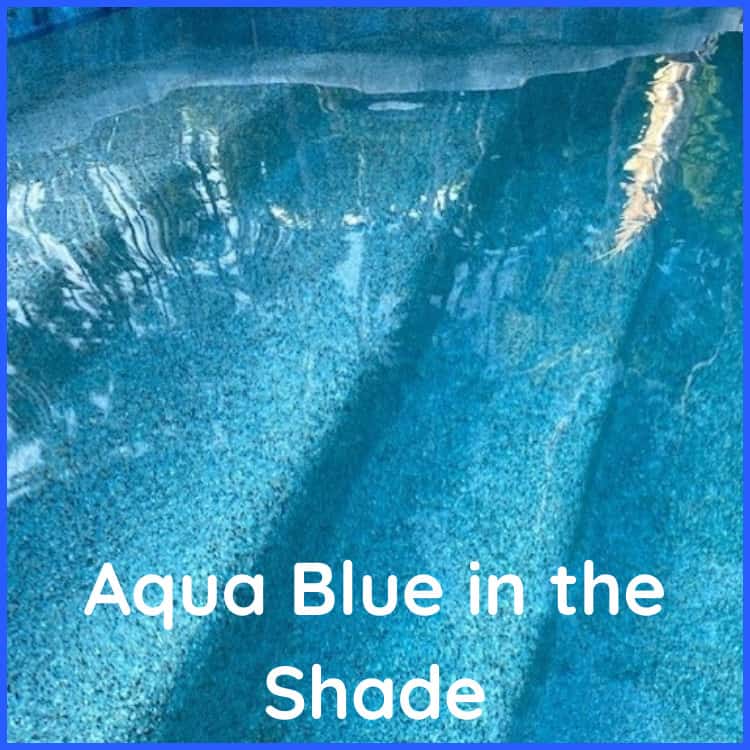
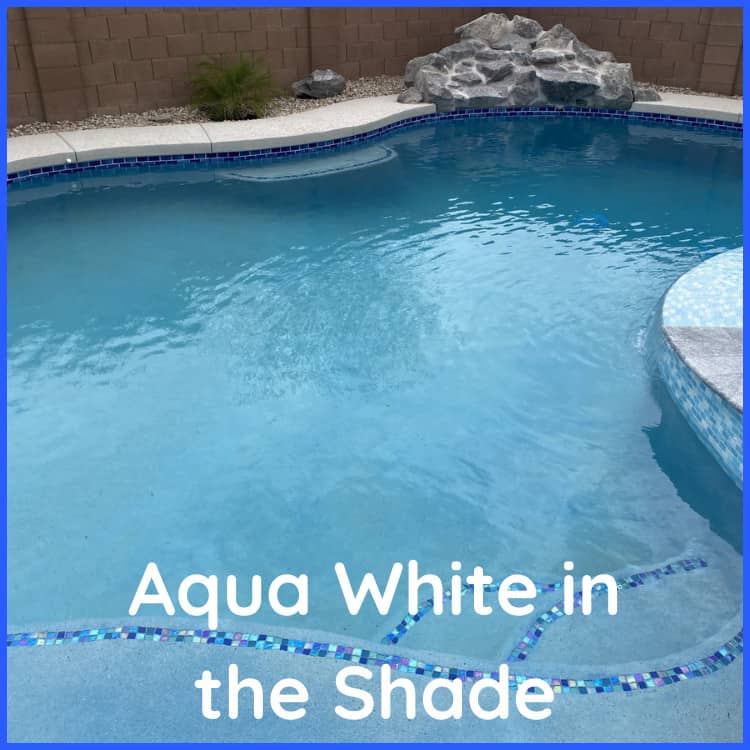
Videos of Stonescapes Aqua White and Aqua Blue
Here are a few third-party videos of an installed pool with either Aqua Blue or Aqua White. These should provide a good look at what these two finishes might look like when they’re in your pool.
Aqua Blue Video
Aqua White Video
How Do the Aggregates Differ?
There isn’t much difference in the base aggregate blends between Stonescapes Aqua Blue and Aqua White Mini. The only real difference Aqua Blue has black and gold aggregates added:
- Aqua Blue: This is composed of aqua blue pigmented white Portland cement and contains black, gold, and white quartz pebble aggregates as well. This creates a pleasant contrast between light and dark colors.
- Aqua White: This is composed of aqua blue pigmented white Portland cement, the same as Aqua Blue. However, this finish doesn’t have black and gold – only natural white quartz pebble aggregates.
Of course, depending on who your pool builder is, they may allow you to customize the mix with additional colors and materials. This may come with a higher price, but it might be a good decision if you’re after something unique.
How Do Different Blends Change the Appearance?
As I keep on saying, you can change the appearance of your Aqua Blue or Aqua White with various different blend options.
These include things like:
- Abalone shell
- Puerto Rico blends
- Touch of Glass
The differences these materials create can make a huge difference, particularly when the sun shines on your pool.
Be aware adding complex blends and different materials can pump up the price of installation. So, always consult your pool builder before throwing anything else into the mix.
In the next few sections, I’ll go over some of the additional blend options and provide images of how they might look once installed. Be aware, your pool might not come out looking like the ones in these pictures!
Aqua Blue and Aqua White with a Touch of Glass
A Touch of Glass is where small glass beads are added to the mixture, creating both pop and shine when the sun hits the pool. Like most materials, you can add as much as you want. Just be warned that adding too many can roughen the surface and white out the color.
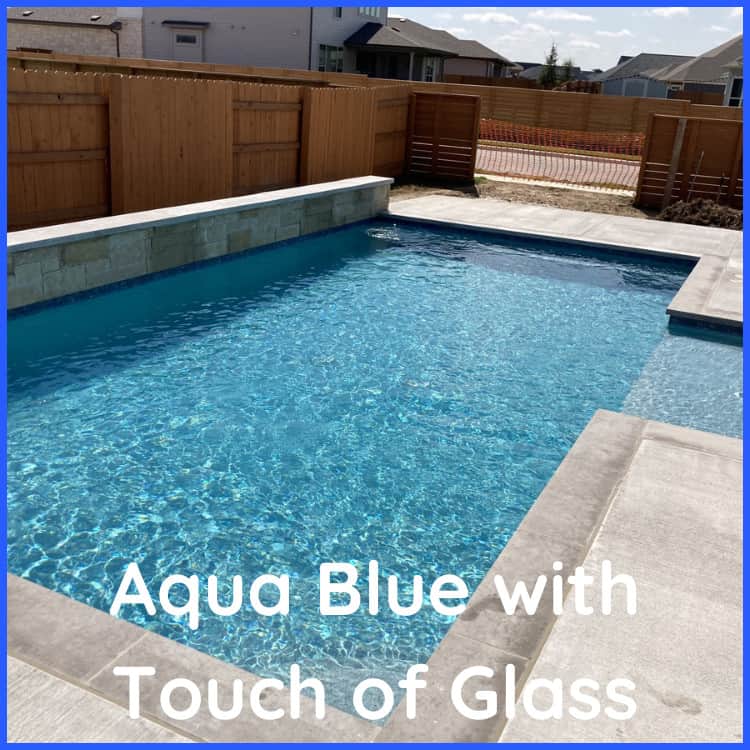
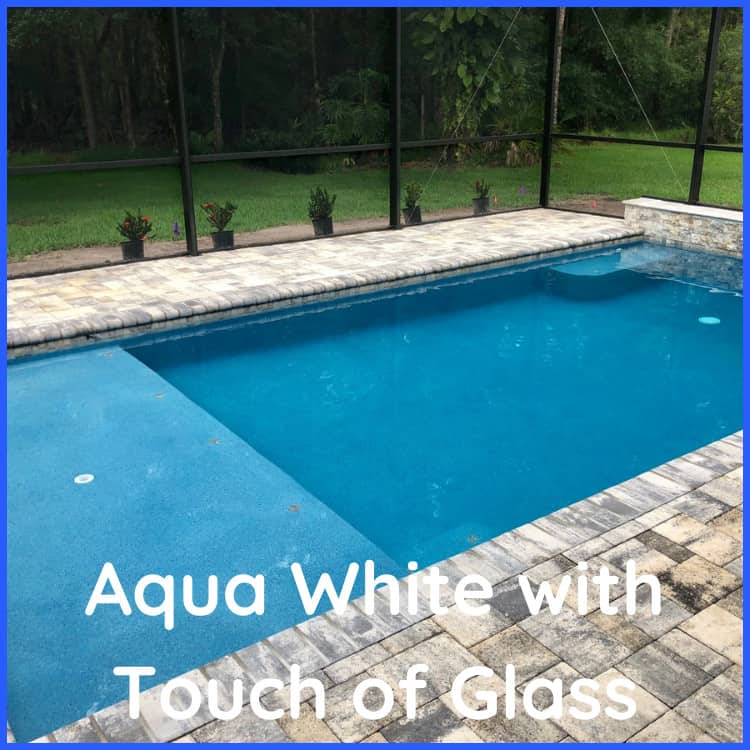
Aqua Blue and Aqua White with Abalone Shell
Abalone shell is exactly what is sounds like – shells! These shells are crushed up and polished to a high standard before being added to your mix. Adding abalone shell creates unique sparkles in your pool floor, which look great on sunny days. Just be aware this material comes at a premium and can degrade over time.
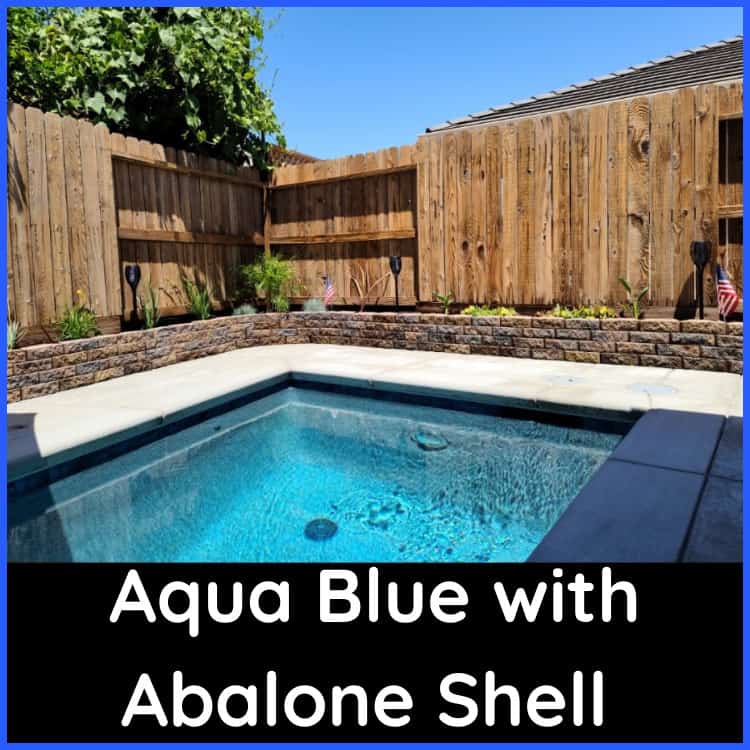
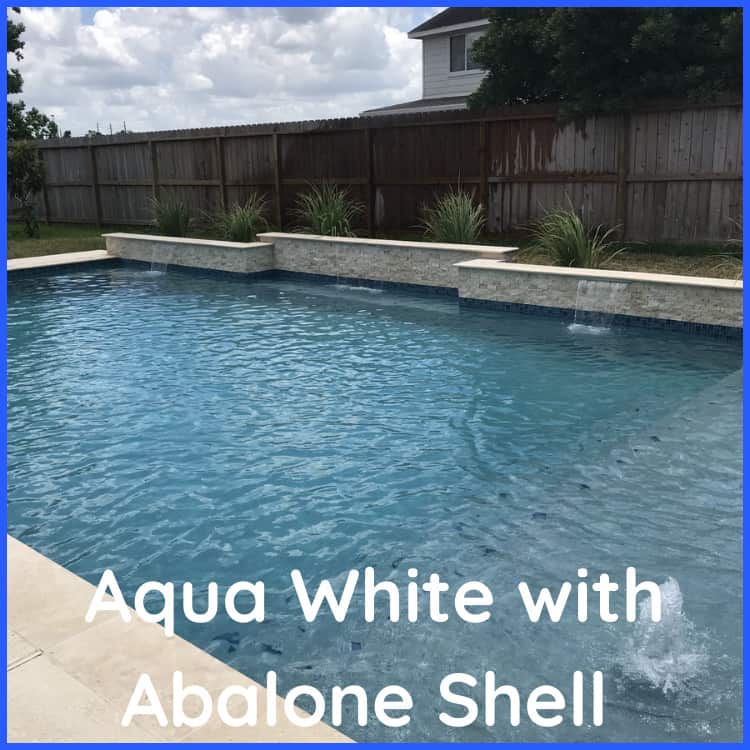
Aqua Blue and Aqua White with Puerto Rico Blend
Many people add Puerto Rico Blend (PR) to their interior mixes. This blend comes in three different sizes: micro, small, and large.
PR blend is very similar to Touch of Glass, as it also contains glass beads. The difference here is these beads are iridescent, meaning they change color depending on how the sun is shining on them.
If you want to produce a mesmerizing shine and you live in a sunny area, PR blend could be a great material to add.
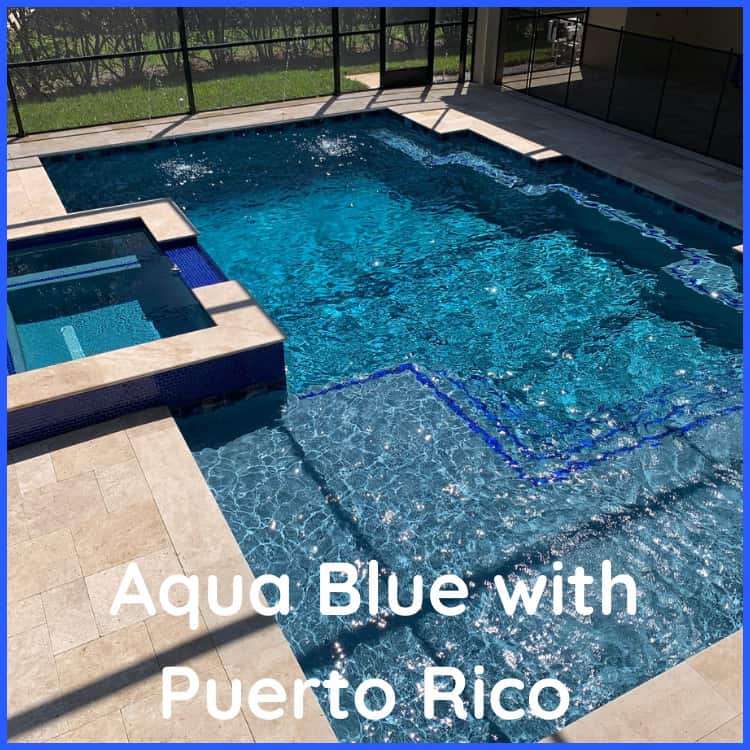
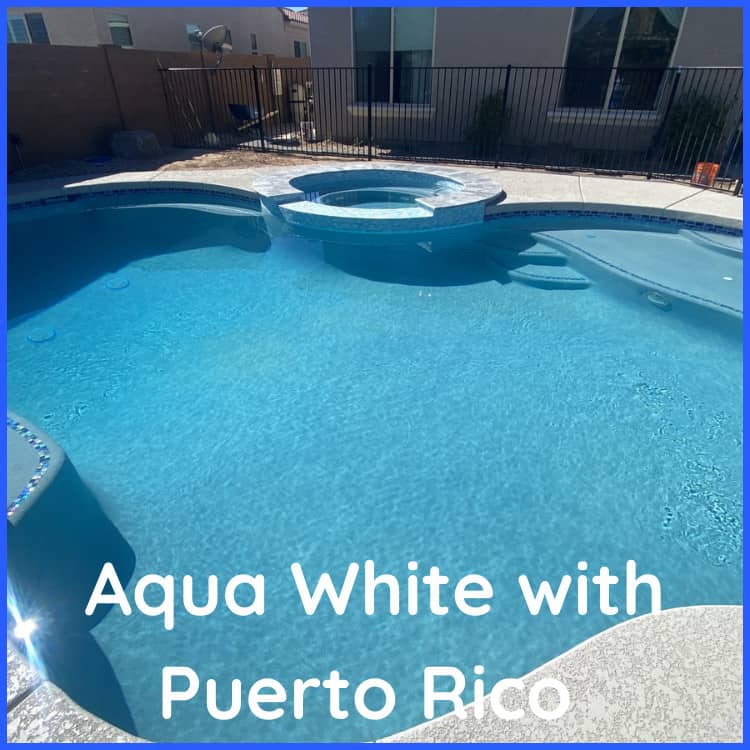
Texture Differences
If you’re opting for the same pebble (i.e. mini), you won’t notice anything different with the texture of the finish.
You’ll only notice a difference if you start mixing different blends and adding things like abalone shell. These can change the surface and, if installed poorly, can add a little roughness to the final product.
Although this post specifically talks about mini pebble, you can alter the pebble size if you want. Changing the pebble size will change how both the floor/sides feel as well as how well specific colors shine through.
Durability
Both are equally durable if you’re not looking to make any changes to the standard aggregates used in the mix. However, if you plan on adding additional materials to the blend, such as abalone shell, you may experience a bit of wear and tear.
In particular, abalone shell can degrade and lose its shine over time, especially if you hired a poor installer! Because they degrade, they can sometimes turn brown and leave stains on your pool floor. Not ideal if you’re looking for that gorgeous blue shimmer!
So be careful when selecting the materials and your pool builder. This stuff can really make a difference.
Price Differences and Upgrade Charges
The big price differences between Aqua Blue and Aqua White come from a number of factors:
- Who’s installing the pool
- Size of the pool
- How much you’re altering the base mixture
The bigger the pool and the more you alter the mixture (add glass, etc.), the more expensive it will be.
From my experience though, most pool builders will add an additional charge of $700-$1000 for Aqua Blue because of the added black and gold. However, this might not be true for all builders. This is why you should always get plenty of quotes before starting the project.
Always read your pool builder’s quote in detail and see what finishes they’ll add a surcharge to. In most cases, Tropics Blue is the one most pool builders will charge a lot more for!
